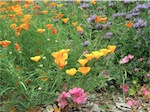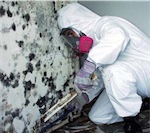Ingredients
Now the tricky part – why healthy material selection isn’t a piece of cake.
Components, such as plywood, are made of many ingredients. There is wood, and then there are the chemicals that hold the wood bits together. It’s like the ingredient list for chocolate chips. Read the ingredients and you quickly find they are more than just chocolate.
When you buy food in the US the FDA has strict labeling rules. Country of origin is clearly printed. Sugar, salt, and calories are stacked neatly in a chart. And – there’s an ingredient list!
Sadly, most building materials don’t come with an ingredient list. You can glean some information from a Material Safety Data Sheet (MSDS), or company websites, but trade secret laws protect corporations from having to disclose their full ingredient lists. There are some ways around this veil of secrecy, but none are easy.
There is a massive movement underway pushing for transparency in manufacturing, and public opinion is slowly coming around. The Healthy Building Network, BuildingGreen, and the US Green Building Council are leading the charge for ingredient transparency in building materials. A few large corporations, like Perkins & Will and Google, are also pushing industry for more transparency. Someday all building materials may have Environmental Product Declarations or Health Product Declarations, like we have ingredient lists on food packaging now, but in the meantime industry’s grip on government trumps our right to know.
Sifting Ingredients
What ingredients are known can be put through an additional filter. The following “precautionary” and “avoidance” lists are very helpful in this review process
Perkins & Will Transparency Lists. This is a comprehensive, free resource from a for-profit company – go figure! They have three primary lists that are backed up with medical studies demonstrating negative health effects from each ingredient on the lists. In addition to the “Precautionary List”, there are also lists for “Asthma Triggers + Asthmagens”, and “Flame Retardants” to be avoided.
Living Building Challenge – Red List. This is a very ambitious avoidance list that includes formaldehyde, halogenated flame-retardants, and PVC. It’s appropriate that items from the Red List should be kept out of “green” buildings… but it is a mighty difficult challenge.
We recently saw alternate pricing for PVC- and halogenated flame retardant-free electrical wiring that increased project costs over $20K for a single-family home. It’s a matter of priorities and budgetary constraints, but one end of the healthy continuum is out of reach for many Americans. Going PVC- or formaldehyde-free comes with a price tag, just like buying premium organic groceries.
Those with wheat, dairy or egg allergies may suffer symptoms after enjoying their first bite of cake. They can put the cake down and walk away for relatively little cost.
Those moving into a building that doesn’t support their health are not so lucky. Sick buildings are contagious – so if you’re planning a remodel or new building learn to avoid the nasties!
Alex Stadtner is President of Healthy Building Science, a firm offering healthy building inspections and green building consulting services and based in the San Francisco Bay Area. This post originally appears at their website and is re-printed here by permission from Healthy Building Science.









amazing home.. nice idea i love this one =)
Thank you for the reply. There are some great quotes out there about not eating anything that wouldn’t biodegrade or return to nature if left outside. Some are now trying to apply that to buildings!
What if at the end of a building’s life we could just remove the roof and let it biodegrade or “melt” back into the earth? Maybe someday… but today’s plastic and foam building products will be here for eons.
Some kid eating a mud-pie next to a rammed-earth or light clay/straw building would have been a nice photo too!
Be well,
Alex